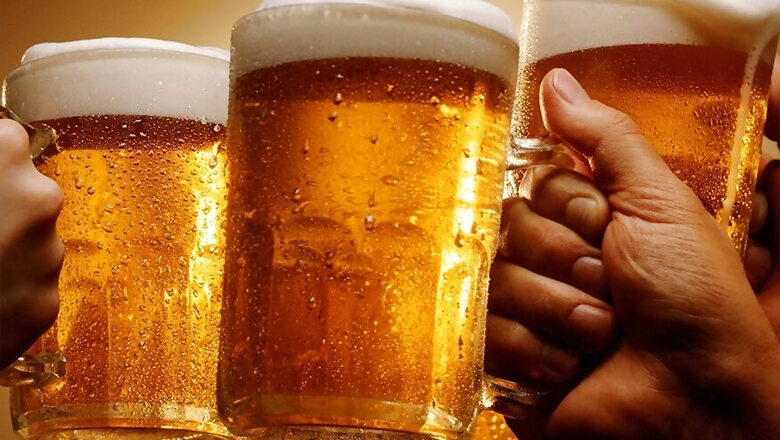
views
 We live in modern times. Thanks to all that progress in molecular biochemistry and technology now we have all the sophisticated instruments and methods in the brewing industry to tinker with the taste and texture of beer.
We live in modern times. Thanks to all that progress in molecular biochemistry and technology now we have all the sophisticated instruments and methods in the brewing industry to tinker with the taste and texture of beer.
You name a flavour they give you the drink. Anything is possible.
But what if the wish is not for getting to the untrodden grounds of taste but to see what our forefathers drank in the murky corridors of the past, those crude drinks that they once lapped at the end of a hard day in the farm, battlefield or ocean?
What did they drink in the days of Jesus Christ? What did beer taste like 7000 years ago? Curious?
Well, the initial urge is to check the dog-eared documents to see the ancient recipes. Alas, not much were written down. The old men were more busy brewing in the evening and finishing it up around fires rather than putting the recipe down in some sepia parchments.
So the only option left for us is to check those places where ancient civilisations were buried for clues. Could those crude vessels once they used for brewing help us?
Well here’s molecular chemistry come as deus et machina, a saviour from the wild.
If you methodically analyse the chemical buildup of residue found on pottery and vessels from various archeological sites, you could beak down the the exact composition, decoding its recipe. This was the plan when Dogfish Head, a brewing company settled in Delaware, US set out to execute in the 1990s. With the help of molecular bio-archeologist Dr Pat MacGovern of the University of Pennsylvania, they started the Ancient Ales series.
Here are the wonderful beers they recreated from the fossilised past:
Midas Touch
Muscat grapes, honey, saffron, we might think that this could be a recipe to some exotic fruit cocktail or food. Sorry this is beer, stuff that our ancient forefathers once drank. Remnants from the clay vessels unearthed from the tomb of King Midas dating back to 8th Century BC were carefully scraped out to study them in detail. The result was the creation of the new beverage, Midas Touch Golden Elixir in 2001. It was then the oldest fermented beverage recipe ever discovered.
Chateau Jiahu
This is virtual time travel to the past, to around 7000 BC China. Jiahu is the oldest beer that you can get to in the modern times. Based on the remnants in vessels found in the Neolithic village of Jiahu (central China) its ingredients contain hawthorn flowers, chrysanthemum, wildflower honey, rice flakes etc.
Know why they started using straws in drinks? Well, with all those flowers and fruits in their beer, they had to leave the chunks of solid behind as lees, to sip just the juice.
Today you have to pay through your nose to get a taste of Jiahu, but the price is justified, as you have to respect the work that went behind recreating a wonder from the past.
After all you get to ancient China on the wings of a beer.
Other beers
Theobrame (9%ABV) cholcolate beer was discovered on pottery found in Honduras a thousand years before Jesus Christ. Honey, annatto seeds, aztec cocoa powder, chillies are the major ingredients. Sah’tea is a modern take on the Finnish brew named sahtea which was made from rye and Juniper. Ta Henket is ancient Egypt brewed from hearth-baked bread spiced with doum-palm fruit, herbs, locally available yeast and camomile.
The craze for discovering more and more drinks that ancient people savoured still hasn't abated a bit at the Dogfish Head. You might find a few of them extreme. For example, their latest sport is to recreate a batch of the traditional Latin American beer called chicha.
Well if you want to taste it as they did once, the corn should be milled and moistened in the chicha maker’s mouth where it could amass enough enzymes that would help fermentation.
In other words they had to spit in the brew.
Will you take such a trip to the past? Well, there could be enough people crazy enough among which they already have found a market and a religion.
(Manu Remakant is a freelance writer who also runs a video blog - A Cup of Kavitha - introducing world poetry to Malayalees. Views expressed here are personal)
Catch the biggest newsmakers and the biggest newsbreaks on CNN-News18, the only news destination. Keep watching CNN-News18 at just 50 paise per month. Contact your cable/DTH operator now!
*Rental/capacity fee of Rs. 130/- as charged by cable/DTH operator may apply. **GST extra.

















Comments
0 comment